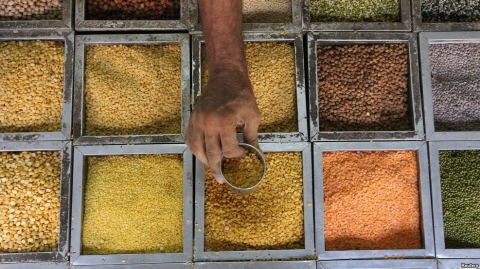
[전문 + mp3] / [받아쓰기]
Planting more lentils, chickpeas or other crops known as pulses will improve the health of the world’s soils. That information comes from the United Nations Food and Agriculture Organization (FAO). The health of soils around the world have reached critical levels, according to the U.N. agency. It says that means hunger and poverty levels could worsen. About a third of the world’s soils are damaged because of erosion, pollution, cities expanding and other issues. This is up from the early 1990s, when the damage soil estimate was between 16 and 24 percent, said Ronald Vargas, who helped prepare the FAO report. Growing cities and populations mean an increasing need for more food. The pressure on the remaining land is growing. "If our soil is not healthy enough, we will have serious issues," Vargas told the Thomson Reuters Foundation. He said it will take 15 years or more and a large amount of investment to build up the soil.
* lentil = 렌즈콩, 편두/ chickpea = 병아리콩/ pulses(주로 복수) = 콩이 여는 식물/ reach ~ = ~에 이르다[닿다/ 도달하다]/ critical level = 위험수위(危險水位), 심각한 수준/ worsen = 악화되다; 악화시키다/ erosion = 부식; 침식
Lentils, chickpeas, dried beans and other pulse crops are part of the legume family. They can grow almost anywhere. Pulses take nitrogen from the atmosphere and leave it in the soil. Nitrogen helps plants to grow. Cereals grown after pulses provided 1.5 tons more per hectare than other crops. The FAO report said that is almost the same as adding 100 kilos of nitrogen fertilizer to the soil. Soils and pulses have a “unique” relationship, said FAO’s director-general, Jose Graziano da Silva. In a statement, he said they protect the environment, increase productivity, and contribute to adapting to climate change. They also provide important nutrients for the soil and crops planted after them. The main damage to soil comes from erosion — the break down and loss of the topsoil by wind, rain and repeated use of machinery. The FAO report said the world is now losing soil 10 to 20 times faster than it is replacing it. Nature takes between 100 and 1,000 years to produce 1 centimeter of soil. Unless that small amount is protected, it can be lost in just a single rainfall or high wind, Vargas said.
* crop = (농)작물/ legume family = (식물) 콩과(科)/ nitrogen = 질소/ cereal = 곡식이 되는 작물, 곡류(벼・보리・밀 등)/ hectare = 헥타르(땅 면적의 단위. 1만평방미터 또는 약 2.5에이커)/ fertilizer = 비료/ productivity = 생산성/ contribute to ~ = ~에 기여하다; (~의) 한 원인이 되다/ adapt to ~ = ~에 적응하다/ nutrient = 영양소, 영양분/ topsoil = 겉흙(표토)/ repeated use of ~ = ~의 반복되는 사용/ replace = (낡은 것・손상된 것 등을) 바꾸다[교체하다]/ rainfall = 강우(량)/ high wind = 세찬[모진] 바람












